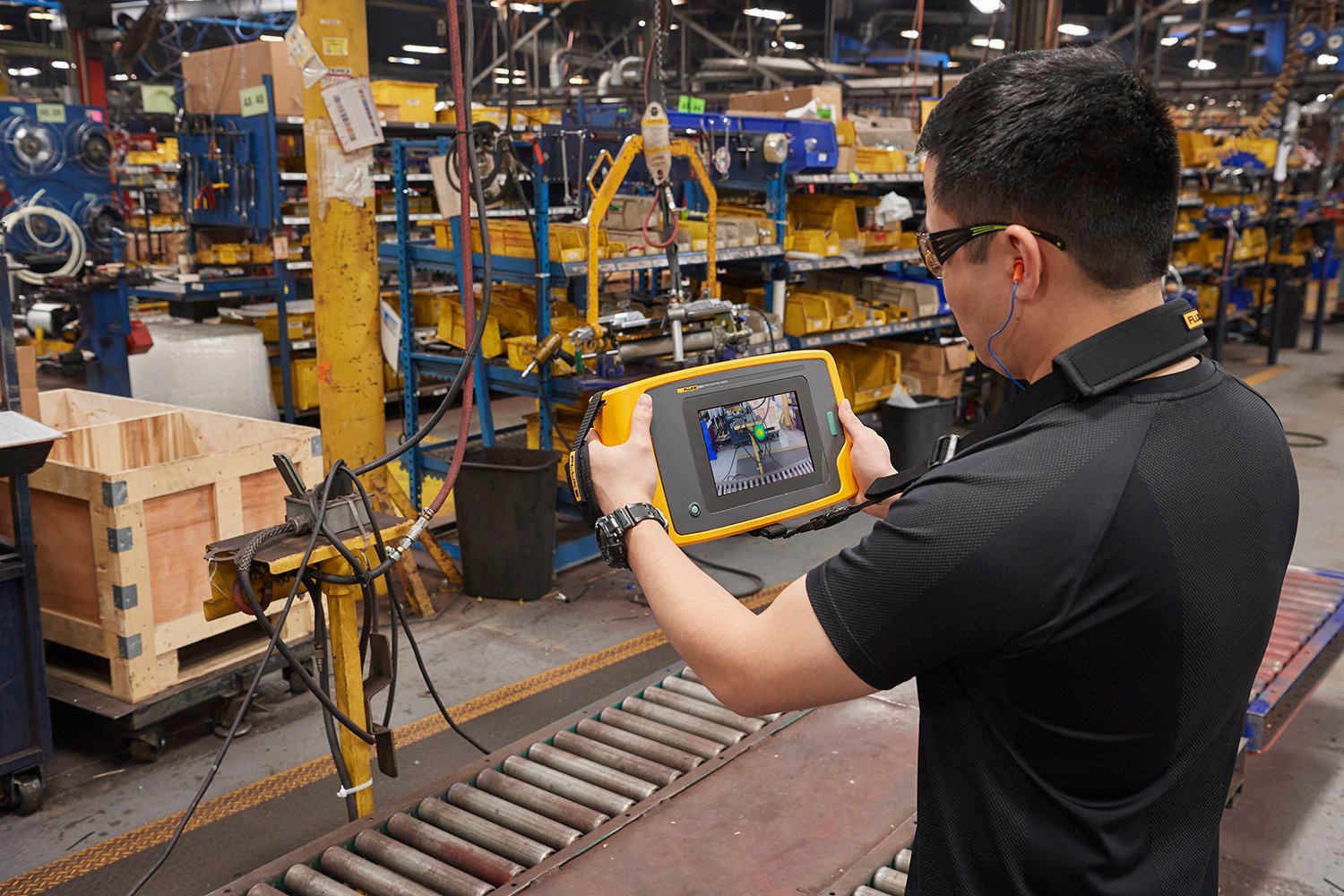Compressed air lines are at the epicenter of success or failure for many factories. When compressed air lines are maximally intact, the air tools they run also function as expected. But when compressed air lines are compromised, the results can be detrimental. Pressure drop, for example, is a phenomenon seen mostly on the demand side of the compressor system where if the standard cubic feet per minute (SCFM) volume of air isn’t supplied by the compressor, then the required operating pounds per square inch (PSI) in the air supply hoses cannot be maintained.
 Using the Fluke ii900 Industrial Acoustic Imager, a technician scans across compressed air lines in a manufacturing plant where they find leaks affecting the performance of their air tools.
Using the Fluke ii900 Industrial Acoustic Imager, a technician scans across compressed air lines in a manufacturing plant where they find leaks affecting the performance of their air tools.
In a large factory, a compressor system can stretch hundreds of feet and sweep in and out through various other operational systems. Issues in a compressed air system can occur anywhere along those lines—including the compressor, air dryer, mainline or pneumatic tool lines. Leaks are the primary cause of reduced performance in pneumatic tools, such as air wrenches, air drills, and air sanders. Leaks reduce air flowing through a line, providing an inadequate amount of air pressure to properly run equipment. So, the solution is easy—find and fix the leaks. But how?
Finding compressed air line leaks is easy—if you can hear them. Most people can’t hear compressed air leaks in a completely quiet environment, let alone in a loud manufacturing plant. And even if you think you hear a leak, you must verify it, which means you need to be able to access it. Again, this isn’t always easy in a busy factory environment where equipment is moving, and compressed air lines are potentially hanging from more than 50 feet up.
The archaic soapy water method of finding and verifying compressed air line leaks is inefficient and inadequate for the size and scope of compressed air lines in a manufacturing facility. A faster, safer, and more accurate method of finding air tool system leaks involves scanning—using a tool that sees sound.
How to use acoustic imaging to find air leaks
The Fluke ii900 Industrial Acoustic Imaging Camera is equipped with an array of ultra-sensitive microphones that allow maintenance teams to quickly, and accurately, locate air leaks in compressed air systems—even in the noisiest of environments. In one day, you can scan your entire system to identify all the leaks in it. But then what?

Just because you’ve found the leaks that are slowing down the performance of your air tools doesn’t mean you’ve solved your problem. You might not have the resources on hand to repair all those leaks.
This is why the Fluke ii900 Industrial Acoustic Imager includes powerful software that not only helps you identify where those leaks are within the system, but also allows for on-screen annotation, leak quantification (how big is that leak?), and smooth report development.
- Asset tagging lets others know where the leak was found
- On-screen annotation provides additional context and considerations for others
- Leak quantification identifies the size of the leak to help you prioritize which leaks deserve attention first
- Reports can include the image of the leak, asset tags, annotation, leak size and more—such as how much that leak will cost you if you don’t fix it—all wrapped into a professional report to share with others, such as repair teams.
Where to find the leaks: a checklist
Scan all connection points and along the entire system. Leaks can come from any hole, gap, or failed connection. Find and fix the leaks to improve air tool performance.
- Couplings
- Elbows
- Filters
- Hoses
- Lubricators
- Nozzles
- Piping tees
- Regulators
- Tubes
- Valves